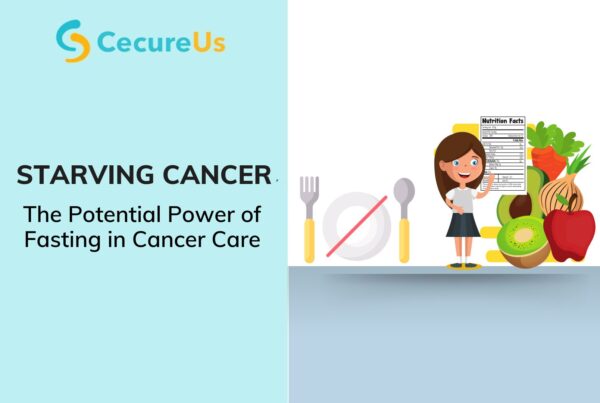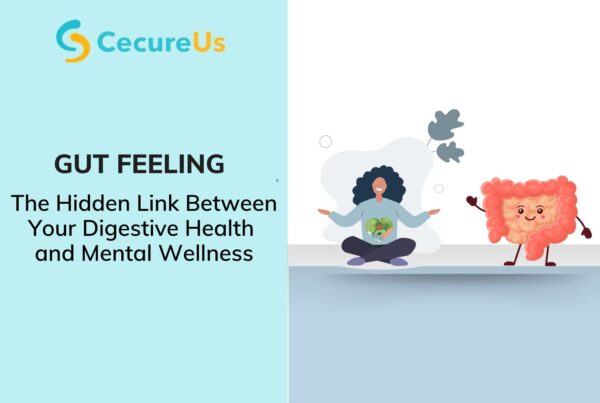Emotional wellness is an integral part of our overall well-being and affects our day-to-day functioning and behaviour. If left unchecked, overwhelming emotional problems can unsettle our lives and the lives of those around us. The extended pandemic has thrown a sharp focus on our emotional wellness and has left numerous employees across sectors wondering how to achieve emotional wellness for themselves and their loved ones or someone they know, so they can cope with situations better.
Based on the Workshop conducted by CecureUs in collaboration with Dr. Bhavna, we discuss the different ways of assessment of the level of emotional wellness of employees, understanding the severity of our problems, taking corrective measures, and building a lifestyle to help employees feel better now and going forward in the new post-covid normalcy that will hopefully soon follow.
Part #1 of this blog looks at multiple ways to effectively assess the emotional wellness of employees and identify what problems may be ailing them. The assessment can then help us recognize the kind of help they may need or the changes to make in their day-to-day lives to feel better and maintain healthy emotional wellness.
We begin by asking – What is Emotional wellness?
Emotional wellness can be defined as the state of well-being that allows an individual to:
- Fulfil their potential
- Be able to cope with problems and situations better even in times of adversities, like Covid-19
- Be able to do productive work while having a sense of purpose
- Be able to make a contribution to society
While these definitions give any employee keen to make an assessment or an overall understanding of how emotional wellness feels, they may not help us gauge our problems or emotional well-being completely.
To do that, we discuss three assessments that can help evaluate the emotional wellness of ourselves or those around us.
Assessment of the level of Emotional Wellness:
Self-assessment based on some specific parameters:
Our emotional states depend on our problems and manifest in different ways. Emotional wellness is also unique from person to person. Some of us may feel frustrated more often, and some may feel extremely tired and spent emotionally and physically. Many of us may also question our physical and emotional capabilities because of our problems, and some may be experiencing body aches and pains more than the usual threshold. Headaches, disturbed sleep patterns for long periods, negative thoughts, and prolonged low levels of concentration and motivation are a few more parameters that can help us understand the impact of our problems on emotional wellness. These parameters are easy to comprehend through simple self-assessment tests.
If an employee has been experiencing any or more of the above for prolonged periods, it clarifies that their emotional wellness is not currently up to the mark and needs all the attention it can get.
Identifying our potential:
Potential versus achievement can reveal to an employee the information about their emotional states. One of the best ways to identify our potential and emotional wellness is by performing a SWOT analysis. SWOT is nothing but an S – Strength, W – Weakness, O – Opportunity, and T – Threat analysis.
Strengths and weaknesses are generally temperamental or based on character and feelings. Opportunities and threats are circumstantial.
If an employee has identified their potential and sees that their performance falls short of their current potential, it could be a red flag.
This is another assessment that can help an employee identify any problem with their emotional wellness.
Types of responses to critical incidents:
Any incident draws out a response from us, however minute. (An apt example of a critical incident is Covid-19). Our bodies and minds are no different. Based on what’s happening around us, or even within us, or the problems we face, our emotional wellness changes, and there are several ways our body responds to critical incidents, be it at home or at work. These physical and emotional responses may sometimes be unbeknownst to us, working as symptoms of deeper emotional problems that we need to be aware of.
Below are the different types of responses to critical incidents that help in assessing our emotional wellness:
– Somatic Responses:
- Somatic responses mean bodily responses, which are mentioned below.
- Insomnia – Is a sleep disorder that affects the ability of an individual to have a good long sleep.
Insomnia can be classified into 3 types:
Initial Insomnia (An individual finds it difficult to fall asleep. Sleep always seems farther away than desired), Middle Insomnia (An individual finds it difficult to remain asleep and wakes up several times in between, effectively breaking the sleep cycle), and Terminal Insomnia (An individual wakes up much earlier than desired and cannot fall asleep again).
- Emotional Eating – Overeating or giving up on food due to appetite loss.
- Aches and pains – You May feel aches and pains in different parts of the body without much reason for the aches.
- Heavy head, headaches – Pain in the front part of the brain (frontal cortex), migraine.
- Palpitations – Irregular beating of the heart. Most commonly feels like the heart skipped a beat or beats too fast.
- Fatigue and tiredness – Feeling emotionally and physically drained, tired, and low on energy.
– Cognitive Responses:
- Difficulty in paying attention, poor concentration, and loss of focus
- Indecisiveness
- Increase in forgetfulness
- Procrastination
- The ruminative pattern of thinking – Thinking of something particular for a prolonged period
– Affective Responses:
- Internalizing stress to our problems manifests as follows – feeling low, disinterest in activities, negative thought processes, social isolation, feeling hopeless and helpless, being prone to anxiety and phobias, and OCD.
- Externalizing stress manifests as anger, short-temper, Irritability, and displaced anger (Showing anger meant for someone or some other situation on someone else)
– Behavioural Responses:
- Demotivated and discouraged
- Procrastinating
- Less productive
- Avoiding situations and absenteeism
- Presenteeism – Being present physically but mentally and emotionally absent.
- Overindulgence in social media
- Increased consumption of caffeinated drinks like Tea and Coffee
- Increased consumption of Alcohol
- Smoking
- Use of drugs (illegal substances or self/unauthorized prescriptions of pharmaceutical drugs
The responses help in the assessment of emotional wellness in a more detailed and descriptive manner. If an employee notices some or many of these responses or reactions in themselves or someone near and dear to them, chances are the employee/ dear one’s emotional wellness is not healthy.
Assessing and identifying form the first few steps to emotional wellness. However, acknowledging that one’s emotional well-being is not healthy is of prime importance. Once this is achieved, emotional recovery can be facilitated much more effectively. The resultant healing would help us deal with the current situation and equip us to be better prepared for any situation that life may throw at us without overturning our emotional and mental well-being.
To know more about our Prevention of Sexual Harassment (PoSH), Diversity, Equity and Inclusion (D,E&I) and Employee Assistance Programs (EAP) solutions do write to us at connect@cecureus.com or call us at +91-7200500221.




